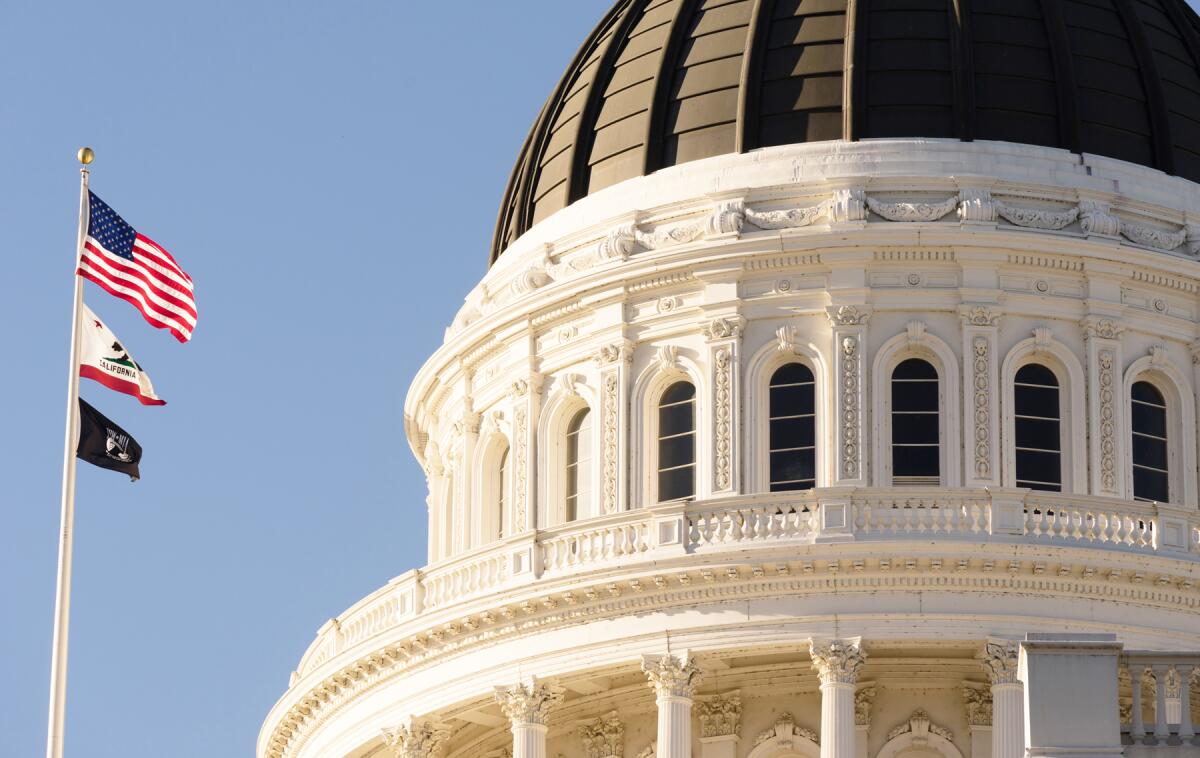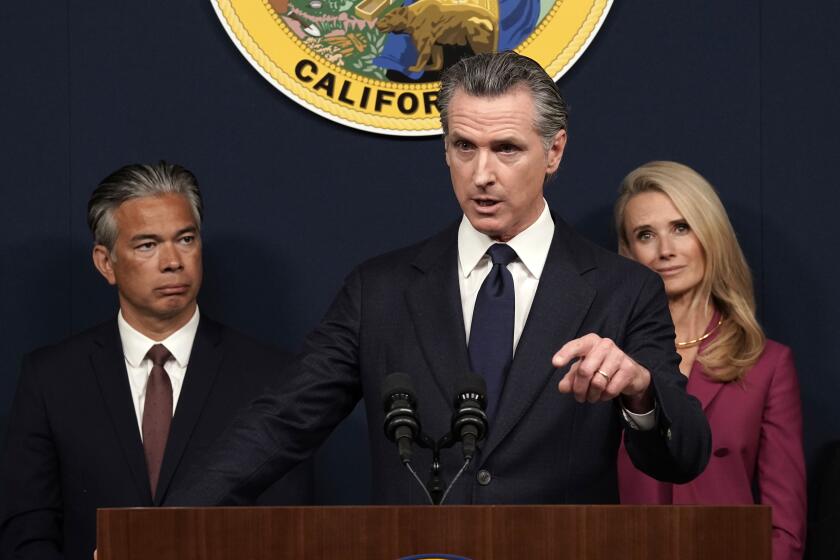Early outlook suggests $2-billion California deficit, warns of federal changes under Trump

- Share via
- The California Legislative Analysts’ Office predicts a $2-billion budget deficit for the state through 2025-26.
- California could be in a much better financial position than earlier this year when Democrats were forced to reconcile a nearly $50-billion shortfall.
- Concerns remain about potential changes to federal funding, tariffs and immigration policy under the Trump administration.
The California Legislative Analyst’s Office reported Wednesday that Gov. Gavin Newsom and lawmakers could face a relatively small $2-billion budget deficit next year, but warned that the outlook looks worse in the future and does not account for changes under the incoming Trump administration.
The Newsom administration agreed with the main tenets of the preliminary fiscal report and said the state should “expect even more uncertainty than usual.”
“Every California budget can be affected by forces outside of our control – whether it’s conflict overseas or an unpredictable stock market here at home,” said H.D. Palmer, a spokesperson for the governor’s Department of Finance, in a statement. “But this year, we have the added uncertainty of dramatic changes in federal policy next year under a new administration, and how policies such as higher tariffs and changes in legal immigration could add additional costs that affect not only the California economy overall, but our bottom line as well.”
The outlook released from the Legislature’s nonpartisan fiscal advisor offers lawmakers a preliminary analysis of the state budget picture through summer 2026. Newsom will unveil an official deficit estimate during a presentation of his budget plan in January.
If elected, former President Trump would have the authority to make good on his threat to cut off federal aid to California for wildfires.
The LAO said the state should be in a much better financial position for next year’s budget than earlier this year when Democrats were forced to reconcile a nearly $50-billion shortfall. Analysts attribute the shift to higher-than-expected tax revenues and prior actions to offset the deficit.
The forecast assumes the state will receive about $7 billion more in tax revenue above estimates made in July. The balanced budget outlook through 2025-26 also relies on $7 billion from the state’s rainy day fund, which Newsom and lawmakers previously agreed upon, and continuing to limit corporate tax deductions and credits.
“It’s really been driven by income gains among high income taxpayers, which are benefiting a lot from the very strong stock market trends that we’ve been seeing,” said Gabriel Petek, legislative analyst.
But Petek warned that revenues are not high enough for lawmakers to make new spending commitments. The LAO is forecasting a deficit of about $20 billion in 2026-27 and an even higher shortfall by 2028-29 of about $30 billion.
The California economy has been in a gradual slowdown over the last two years, Petek said. New job creation has largely been in government and healthcare sectors, with the state reporting about 25% more unemployed workers overall. He also pointed to declining trends in consumer spending.
The passage of Proposition 35, which extends a tax on managed healthcare plans, and Proposition 36, which increases penalties for some theft and drug crimes, is expected to add about $3 billion in costs for the state through summer 2026.
California is also expecting new costs associated with a $25 minimum wage increase for healthcare workers. The LAO said their outlook accounts for higher costs to fight wildfires, but doesn’t calculate in other unanticipated disasters, such as earthquakes or another pandemic.
Newsom’s preemptive strike signals the return of the hostile relationship between Democratic-controlled California and the Trump administration.
“We need to show restraint with this year’s budget, because California must be prepared for any challenges, including ones from Washington,” Assembly Speaker Robert Rivas (D-Hollister) said in a statement. “It’s not a moment for expanding programs, but for protecting and preserving services that truly benefit all Californians.”
State Sen. Roger Niello (R-Roseville) said he shares concerns about the threat of higher tariffs, which Trump vowed to impose when he takes office, both for his family car dealership business and as a representative of a state that exports goods.
He offered a reminder to Democrats that California Republicans can help bridge the divide with the Trump administration.
“It might be a good idea for the governor to remember that while Republicans are a minority here, nonetheless, we’ve got a lot of Republicans involved in state government, and we would be every bit as concerned about the fiscal impacts,” Niello said about disaster assistance and other issues.
“We have lots of relationships with Republicans in Congress, not just those in California, but beyond California. The president and the administration being Republican, I would have to believe that they would pay some credence to the concerns that California Republicans would have,” he said.
More to Read
Sign up for Essential California
The most important California stories and recommendations in your inbox every morning.
You may occasionally receive promotional content from the Los Angeles Times.













